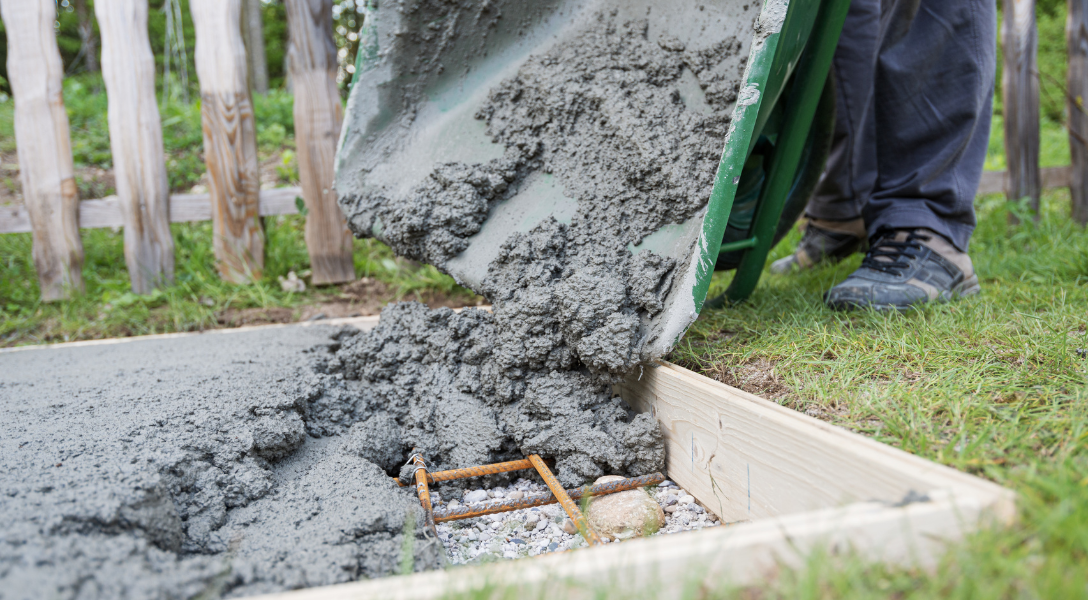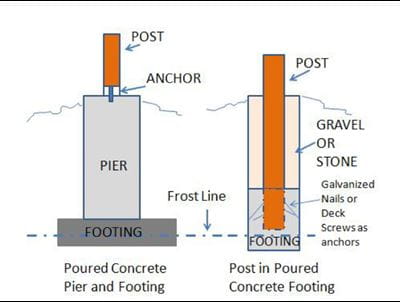The Value of Deck Footing: Key Factors To Consider for a Secure Deck

Importance of Correct Deck Ground
The appropriate ground for a deck is crucial for making sure security and durability. When building a deck, it is important to pay attention to the foundation or ground upon which it will certainly be built. A well-designed and correctly installed ground supplies a strong base that sustains the weight of the deck and distributes it evenly to the ground.
Among the crucial reasons why proper deck ground is very important is to guarantee security. A deck that is not safely anchored to a secure ground can sag or change in time, resulting in potential security risks and pricey repairs. By supplying a solid base, the ground assists to avoid these issues, making certain that the deck stays level and protect.
Additionally, correct deck footing additionally contributes to the long life of the framework. A secure footing assists to minimize motion and settling, which can cause anxiety on the deck's materials and lead to early wear and tear. By developing a strong foundation, the deck is much better able to endure the elements and keep its structural stability with time.
Elements Influencing Deck Stability
Aspects impacting deck security include the soil make-up, climate conditions, and deck style. These factors play an important duty in identifying the total security and longevity of a deck structure.
When constructing a deck,The dirt composition is a necessary factor to consider. Various kinds of soil have varying load-bearing capacities, which directly affect the security of the deck. For example, sandy or fertile soil may not offer adequate assistance for a deck, while clay or rough soil can supply far better security. Performing a dirt analysis before building can aid figure out the viability of the soil for the deck footing.
Climate conditions likewise influence deck stability (Deck Footings). Extreme weather such as high winds, hefty rainfall, and freezing temperatures can put considerable tension on a deck structure. Adequate support and correct style considerations, such as using appropriate bolts and products, can assist reduce the impact of these climate condition and make sure the deck remains steady in time
Deck layout is an additional critical variable affecting stability. The layout ought to think about the awaited tons, the spacing and dimension of the grounds, and the general structural integrity. A deck that is not appropriately developed can droop, move, or even collapse, endangering the safety and security of those utilizing the deck.
Choosing the Right Ground Type
When taking into consideration the stability of a deck, it is essential to very carefully select the suitable kind of footing. The sort of footing you choose will certainly depend on different aspects such as the dirt problems, climate, and the size and layout of your deck. Both main types of grounds generally made use of for decks are concrete footings and helical heap footings.

Helical stack footings, on the various other hand, are an even more ingenious and flexible choice. These grounds are screwed right into the ground utilizing a hydraulic motor, giving immediate stability and load-bearing ability. Helical stack grounds are suitable for decks improved sloping or irregular terrain, as they can be installed at various depths to suit the ground problems. They are likewise a fantastic alternative for decks that require to be integrated in locations with high water tables or on sensitive dirt types.
Correct Footing Installment Techniques
Appropriately installing the deck footing is vital for guaranteeing the security and longevity of the deck structure. There are a number of vital techniques that need to be followed to make certain a strong foundation. when it comes to setting up deck grounds.
To start with, it is necessary to begin with a well-prepared website - Deck Footings. This involves clearing the area of any type of plant life or debris and guaranteeing that the ground is degree. A level site will assist stop any kind of irregular settling of the footings over time
Next, the footings ought to be dug to the appropriate depth. The deepness will certainly rely on elements such as the soil type and regional building regulations. Normally, grounds must be dug listed below the frost line to stop frost heave and make certain security.
After excavating the openings, it is essential to correctly small the soil near the bottom. hop over to here This can be done utilizing a hand meddle or a mechanical compactor. Condensing the soil will offer a firm base try this out for the footing to remain on.
Once the grounds remain in location, they must be full of concrete. The concrete must be blended according to the producer's directions and poured right into the openings. It is very important to make certain that the concrete entirely loads the holes and is level with the surrounding ground.
Ultimately, the concrete must be allowed to heal for the advised quantity of time prior to any type of weight or load is placed on the deck. This will certainly make certain that the grounds have fully set and are prepared to support the deck framework.
Routine Maintenance for Durable Deck Stability
Normal assessment of the deck footing is essential. Guaranteeing that the footings are complimentary and secure from any indicators of settlement or shifting will certainly assist maintain the total stability of the deck. By constantly applying these upkeep methods, deck proprietors can make sure that their decks remain safe and secure for years to come.
Conclusion
In final thought, correct deck footing is vital for keeping a stable deck. Elements such as dirt climate, type, and deck lots should be taken into consideration when selecting the ideal ground kind.
The importance of deck footing can not be overstated, as it gives the foundation upon which the entire deck framework is developed. A deck that is not effectively designed can droop, change, or also collapse, compromising the safety of those using the deck.
The two main types of footings typically utilized for decks are concrete footings and helical pile grounds.
By consistently implementing these maintenance techniques, deck proprietors can make certain that their click resources decks continue to be stable and safe for years to come.
In verdict, correct deck ground is vital for preserving a steady deck.